BELINKIE: Guys, I’ve been watching all the cutscenes for Mortal Kombat X. DON’T JUDGE ME. I think it’s really interesting how they have fleshed out a massive backstory for characters that were originally bare bones. For instance, Sub-Zero and Scorpion in Mortal Kombat 1 were originally the same actor, recolored from yellow to blue. But in the new game, there’s a whole mythology about rival clans of ninja and their intergenerational struggle.
My question is, is there a name for this? When you take a simple story and then flesh out the details? I guess it’s just a form of retconning, right?
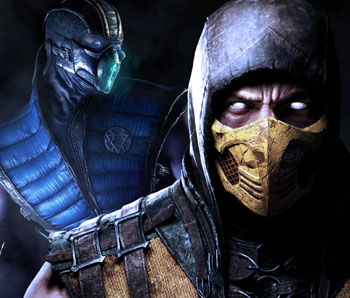 FENZEL: I feel like retconning and the thing you’re describing often happen at the same time and one may even be a subset of the other, but I feel like the sense of what they are is different. Retconning to me involves continuity. You change something that happened in a story well after it was published in order to inform a connection between that story and your current story and reinforce or save the continuity between the two.
FENZEL: I feel like retconning and the thing you’re describing often happen at the same time and one may even be a subset of the other, but I feel like the sense of what they are is different. Retconning to me involves continuity. You change something that happened in a story well after it was published in order to inform a connection between that story and your current story and reinforce or save the continuity between the two.
But taking a detail that exists by chance or by inspiration and that potentially implied a bunch of unspoken stuff, and then fleshing all that stuff out later to inform a future story, maybe that’s not so much retroactive continuity as retroactive exposition or retroactive intention. To me the latter feels like a richer and more positive thing to do, because continuity on its own isn’t really all that great or rewarding- it’s a means to an end of telling a story that your own storytelling rules would have otherwise made you not tell. So a retcon is only really worth it if the story it enables is worth it.
But fleshing out details from something that was only hinted at previously is straight up fun in its own right, and it’s a source of new stories. It’s part of the illusion that stories are real and planned and have purpose and intention, which is important to how we connect with them. In Breaking Bad they did this a lot – throw in a detail without really attaching a meaning to it, then relying on the audience to flesh out implied significance in how they enjoy the show, and later go back and flesh out some of the previous details to make the story feel more grounded.
The story that Sub Zero and Scorpion are from rival ninja clans with complex mutual vendettas because of their different color costumes is more fun than the retcon that Sub Zero is a title rather than a name and the current Sub Zero is the brother of the previous Sub Zero, because we want to explain why characters come back in a game series where they obviously die.
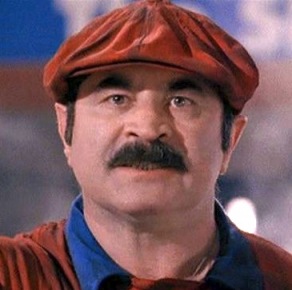 BELINKIE: Breaking Bad is one thing. What fascinates me are the cases where the initial story is clearly bare bones or even sloppy and incoherent, and the writer is challenged to build something substantial on that foundation. Video games are really good examples. The Super Mario Brothers movie may not be a success, but it’s a fascinating exercise in taking a surreal world and trying to tie it all together. Super Mario Brothers wants to tell a story about the Mushroom Kingdom being connected to New York via sewer pipes, and have it all make sense. This is crazy. Some poor screenwriter had to write dialogue for Dennis Hopper as King Koopa.
BELINKIE: Breaking Bad is one thing. What fascinates me are the cases where the initial story is clearly bare bones or even sloppy and incoherent, and the writer is challenged to build something substantial on that foundation. Video games are really good examples. The Super Mario Brothers movie may not be a success, but it’s a fascinating exercise in taking a surreal world and trying to tie it all together. Super Mario Brothers wants to tell a story about the Mushroom Kingdom being connected to New York via sewer pipes, and have it all make sense. This is crazy. Some poor screenwriter had to write dialogue for Dennis Hopper as King Koopa.
FENZEL: I mean, if I’m doing it, which I sometimes do with live comedy shows, I start by listing “what do people like about this story?” What do people actually like about the Mario Brothers? The jumping, the music, the tone, the sense of fun, that it’s the first game a lot of people played a liked, the fantastical creatures. Not the fact that Mario is a New York plumber or that Mario and Luigi are brothers with an odd status difference.
BELINKIE: There’s definitely something fun about that kind of storytelling. You can enjoy it for itself, but you can also enjoy it on a meta-level, to see how the writers are handling this tricky act of adaptation.
 STOKES: So I think there’s maybe a continuum here, maybe with more than two poles. On the one hand, there’s fleshing out the backstory, which is such a normal part of storytelling as to scarcely bear mentioning. It would cover too much. All of Sophocles, for instance. The Odyssey mentions that Ajax killed himself, but doesn’t go into depth. Generations later, Sophocles adds depth and texture to the episode by writing his Ajax. On the other hand, there’s retconning: changing an established aspect of canon. We typically think of this as bad writing, or a necessary evil at best, but that’s not necessarily the case. The idea that Superman can fly was a retcon.
STOKES: So I think there’s maybe a continuum here, maybe with more than two poles. On the one hand, there’s fleshing out the backstory, which is such a normal part of storytelling as to scarcely bear mentioning. It would cover too much. All of Sophocles, for instance. The Odyssey mentions that Ajax killed himself, but doesn’t go into depth. Generations later, Sophocles adds depth and texture to the episode by writing his Ajax. On the other hand, there’s retconning: changing an established aspect of canon. We typically think of this as bad writing, or a necessary evil at best, but that’s not necessarily the case. The idea that Superman can fly was a retcon.
But the Mortal Kombat case is interesting because, in the first game, the idea that there is no depth or texture to the plot or the characters is itself canonical. It’s as though we perform an unconscious check, every time we encounter a fictional character, as to whether this person is real enough to have a story worth telling. For stuff like Angry Birds, the answer is no. For stuff like Halo, the answer is yes. This gets into, uh — I think it’s Bertrand Russell territory? Where a statement like “the king of France is bald” currently false because it has to be understood as “there exists such a person as the king of France, and he is bald.”
And “Unicorns have horns” can be true, because what you’re actually saying is “there exists a mythological figure called a unicorn, and they have horns (in those stories).”
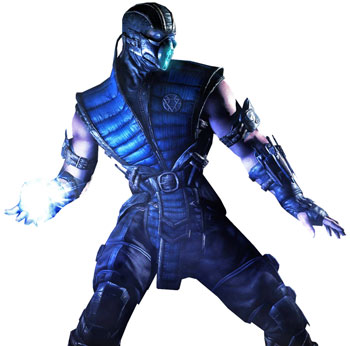
Jeez, look at this guy’s waistline. Can we talk about unrealistic standards for ninja beauty?
If I’m playing Mortal Kombat back in the day, and I say something like “Sub-Zero has ice powers,” I am NOT saying “there is a psychologically realistic character named Sub-Zero who presumably has a backstory and complex motivations, and he has ice powers.” I’m saying “there is a digital puppet named Sub-Zero, and he has ice powers.”
ADAMS: One interesting feature about this sort of story telling/adapting is the tendency for decisions that are wholly unrelated to story telling becoming hugely important down the road. Subzero doesn’t have freeze powers because his father died from heat stroke and he made a sacred vow of cold. He has freeze powers because a game developer came with with a cool game mechanic that would let you freeze your friend/opponent before punching them in their helpless face.
FENZEL: Narrativizing like this can recenter the work from its core to an irrelevant detail, but it also provides an opportunity to recenter the work on something people actually like and think is fun about it, which might have been an accident the last time around.
 ADAMS: For sure! It’s impossible to know for sure what people will like ahead of time, and it’s even hard to know why people like what they like when they like it. So Mario has a mustache because of the limits of 8-bit graphics, but that doesn’t mean his mustache isn’t also awesome.
ADAMS: For sure! It’s impossible to know for sure what people will like ahead of time, and it’s even hard to know why people like what they like when they like it. So Mario has a mustache because of the limits of 8-bit graphics, but that doesn’t mean his mustache isn’t also awesome.
But it also means that in the Battleship movie, aliens have to have bombs that look like pegs because as we all know, what people love about Battleship is the pegs.
FENZEL: There’s what we know, what we don’t know, and what we like: all axes on which this operates.
BELINKIE: Battleship raises an interesting point. Can we predict what kinds of things lend themselves well to narrativizing? Super Mario Brothers, no, because the nonsense is the whole point. Mortal Kombat, yes, because you have a lot of interesting characters and a basic conflict to pit them against each oher (a tournament).
Angry Birds? Hard to say. On the one hand you do have nice character designs, including main characters with different looks and abilities. But the main mechanic of the game, catapulting yourself at pigs, can’t be more than 20% of the movie, right? Guess we’ll find out next summer.
ADAMS: I think any attempt to figure out what CAN be narrativized is going to be confounded by the challenges of execution. It’s not like you can’t make a good movie about naval combat and brand it “Battleship.” They just did a crappy job of it.
 BELINKIE: You can make a good movie about naval combat and brand it “Battleship,” but I’d argue that you can’t make a good adaptation of the Battleship board game. There’s not enough of the game to hang your hat on. Compare that to Clue. You have the setting. The characters. The mechanic of running around gathering clues. It’s perfect.
BELINKIE: You can make a good movie about naval combat and brand it “Battleship,” but I’d argue that you can’t make a good adaptation of the Battleship board game. There’s not enough of the game to hang your hat on. Compare that to Clue. You have the setting. The characters. The mechanic of running around gathering clues. It’s perfect.
FENZEL: First of all, I liked Battleship. But that’s neither here nor there.
Secondly, there is the idea of “inspiration.” Can you find something in the game Battleship that is inspiring to you, and that you can spin out into a whole movie? Maybe that’s a different paradigm than “adaptation” or something more like “skinning” or “re-branding.”
If you actually wanted to make a good movie about Battleship, you should start with what people like and think is interesting about Battleship. I think the sense of the tension of the mutual unknown, the symmetry of it, is part of what the movie misses by making the bad guys non-character aliens.
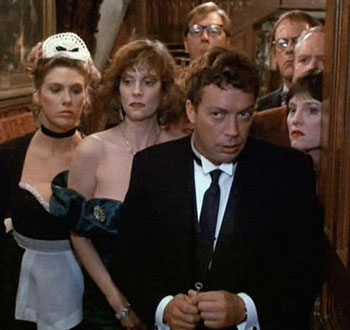 ADAMS: There’s something exciting about the moment of tension between announcing C5 and waiting for that crucial “hit” or “miss”, and there’s no reason you couldn’t build a movie (or at least an action set-piece) around that moment
ADAMS: There’s something exciting about the moment of tension between announcing C5 and waiting for that crucial “hit” or “miss”, and there’s no reason you couldn’t build a movie (or at least an action set-piece) around that moment
Belinkie, I think you’re right that it’s easier to adapt something like Clue because of the characters, setting, etc. But I think it’s a matter of degree (i.e. how LIKELY is the adaptation to be good) than of kind (i.e. CAN this adaptation be any good).
BELINKIE: This sort of storytelling, where you add more detail to something that started out pretty simple, seems like a growing part of our culture. Superhero stories started out as really basic tales for kids. Now an adult audience wants these same characters to have more psychological complexity and more elaborate plots. So for instance, Stan Lee created the Kingpin as a cookie cutter mob boss. Over the years Daredevil writers have added more and more nuance. Now Vincent D’Onofrio is getting accolades for his riveting but very R-rated portrayal on Netflix’s new show. Some aspects of the character have certainly been retconned over time, but mostly what’s going on is that the original surface level characterization has been filled out into something more interesting.
Another way to put it is that the most basic version of the story has EVOLVED.
FENZEL: We are entering a baroque period of ornate and painstakingly detailed Alvin and the Chipmunks movies.
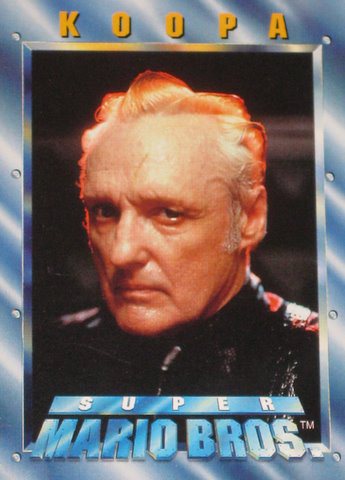 STOKES: So, stepping back a bit: at the most abstract level, the thing we’re talking about is a mismatch between certain kinds of intellectual property (mostly games) and the storytelling conventions of Hollywood. And we’ve pretty much been talking about this as if the problem is with the intellectual property: how do we jam that square peg into this round hole? But couldn’t we change the hole? Maybe the problem with adapting Super Mario Brothers isn’t that Mario is unadaptable, but that they tried to turn it into a normal movie. Okay, so not normal — you do have Dennis Hopper running around with anime hair and a lizard tongue — but you get what I mean. It has a standard plot structure with rising and falling action, characters who talk to each other, the whole nine yards. Luigi gets a coming-of-age arc and a love interest (even if she turns out to have mycelium).
STOKES: So, stepping back a bit: at the most abstract level, the thing we’re talking about is a mismatch between certain kinds of intellectual property (mostly games) and the storytelling conventions of Hollywood. And we’ve pretty much been talking about this as if the problem is with the intellectual property: how do we jam that square peg into this round hole? But couldn’t we change the hole? Maybe the problem with adapting Super Mario Brothers isn’t that Mario is unadaptable, but that they tried to turn it into a normal movie. Okay, so not normal — you do have Dennis Hopper running around with anime hair and a lizard tongue — but you get what I mean. It has a standard plot structure with rising and falling action, characters who talk to each other, the whole nine yards. Luigi gets a coming-of-age arc and a love interest (even if she turns out to have mycelium).
But why does it have to be that way? Why couldn’t it just have been an hour and a half of wire stunts recreating iconic moments from the game? (Mario jumps on a guy in a mushroom suit, Mario jumps on a guy in a turtle suit, Mario dives into a sewer pipe, Mario jumps on a guy in a fish suit.) You know who should have made a Super Mario Brothers movie? Cirque du Soleil.
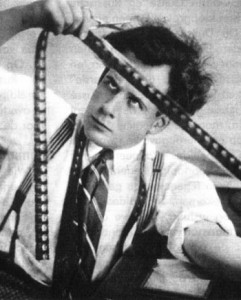 Making Battleship into a Hollywood blockbuster is hard. The material doesn’t lend itself to that treatment. But Sergei Eisenstein’s Battleship would be outstanding. I can see it now: no characters, only a shell of a plot, it’s mostly just a long bravura set-piece where you cut back and forth between the admiralty war room (where people are sliding little ships around on the map with a croupier’s rake, and ordering an attack on sector B5), and the actual ships at sea (where sailors are feverishly executing these commands, and then getting horribly killed). Yes, there are obvious economic reasons why this version would never get made. But when we say “It’s hard to make a decent movie out of Battleship,” I think we’re conceding too much to the current form of the culture industry.
Making Battleship into a Hollywood blockbuster is hard. The material doesn’t lend itself to that treatment. But Sergei Eisenstein’s Battleship would be outstanding. I can see it now: no characters, only a shell of a plot, it’s mostly just a long bravura set-piece where you cut back and forth between the admiralty war room (where people are sliding little ships around on the map with a croupier’s rake, and ordering an attack on sector B5), and the actual ships at sea (where sailors are feverishly executing these commands, and then getting horribly killed). Yes, there are obvious economic reasons why this version would never get made. But when we say “It’s hard to make a decent movie out of Battleship,” I think we’re conceding too much to the current form of the culture industry.
For a further discussion on the issues inherent in a Battleship adaptation, check out Richard Rosenbaum’s piece on “How to Squeeze Movies From Stones.”
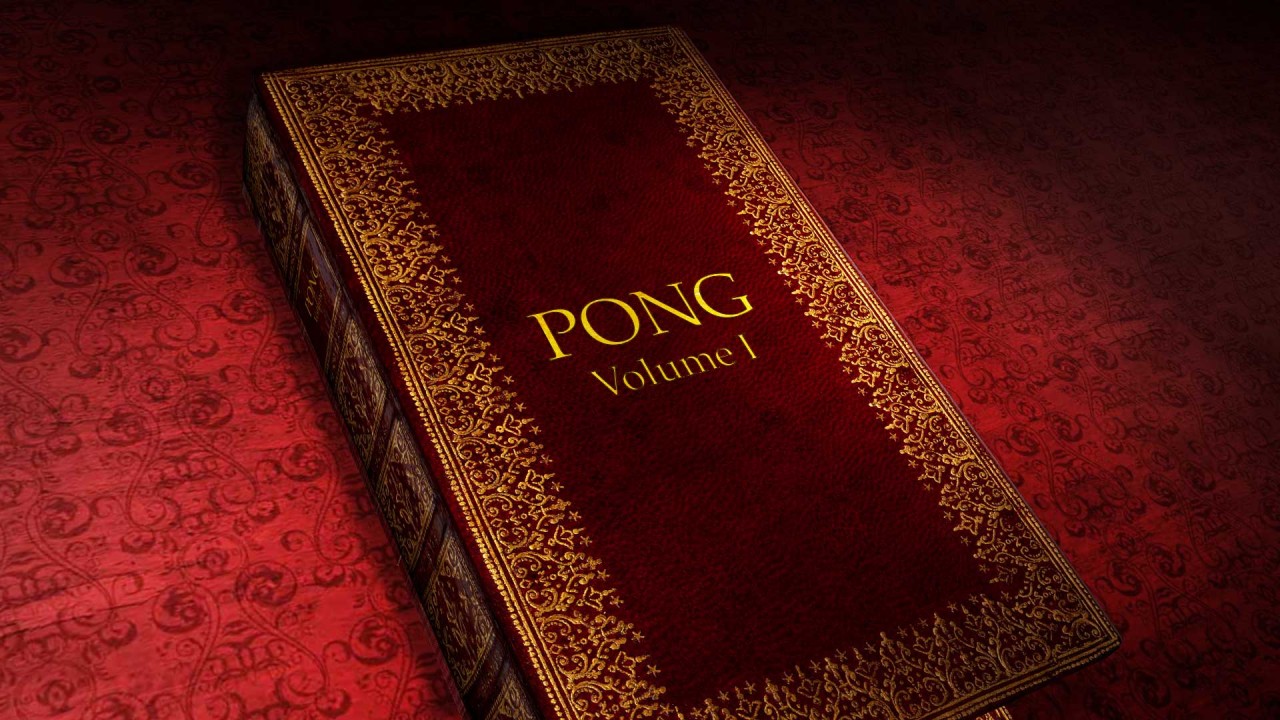
“Guys, I’ve been watching all the cutscenes for Mortal Kombat X.”
Firstly, I’d like to say thank you. Comments like this are exactly why I keep coming back to this site. I did the same thing with MK9 and MKX and then I actually went out and bought MKX for myself, even though I don’t own a next-gen console and had to borrow one to play it.
Anyways, there’s another aspect to this kind of contextualization that can be really unfortunate: the canonization of very specific elements.
In the Mortal Kombat example, one of the reasons that I liked X so much was because it took a chance in flinging its characters twenty years into the future and introducing a whole new generation of fighters. But before it could do this it had to use the entirety of MK9 to retell the whole story of the first three games (in what felt an awful lot like a stage play being adapted to a video game for some reason, even including the limited sets with little interaction from the actors and the occasional aside to the audience.)
This is a major road block for some other franchises. For example, while the Godzilla films of the 90s and beyond are arguably better than a lot of what came before them, there will never be a new Godzilla villain which rises to the ranks of the the classics like Mothra and Ghidorah. Or even the less-than-classics which just happened to be there decades ago and now have that extra validity given to them by age. There’s a reason that people dust off Baragon but not Biollante.
The Ninja Turtles franchise is going through something similar: over the course of an acclaimed TV show, an acclaimed comic book series and a not-at-all-acclaimed movie, basically only ONE story is being told. The rise and defeat of Shredder and the fallout from that event. Each version has its own new characters as well but there’s very little hope that any of them will stick around in any of the stories that follow this Bronze Age of Turtle.
I maintain that a big reason why Spawn fizzled out so quickly is because it reached this apex of creativity almost instantly through such quick adaptations. As a kid, I watched the origin story of Spawn at least three times and then never saw another Spawn story ever again. There was nothing left to adapt, apparently. There was nothing left to recontextualize.
This can be dangerous for some ideas because by minting them we’re also stopping them from growing. They only turn inward and hope that they’ve gotten big enough that there are still worlds inside of them to explore.
Point being: we’ve got FIVE Terminator movies now and not a single one includes dinosaurs, ninjas or aliens? For shame.
I spent several hours a few months ago reading the Tekken wiki—probably as much time as I’ve spent playing all the games in the series combined, so I’m pretty much on board with this from square one.
Fighting game lore I think makes for a beautiful, experimental kind of storytelling, in that it invites and maybe even requires an epic sense of scope and stakes, yet all the plot, conflicts, and characterization are subordinate to a character designer who could not give two shits about the story you’re trying to tell. The character designer likes how this robot, kangaroo, velociraptor, and dude made of wood look, so you have to fit them into your epic, multi-generation tournament fighting saga featuring 40+ viewpoint characters.
It’s like taking a creative writing class freewriting exercise where you have to pull characters out of a hat and write a story about them, but you end up writing 400 pages and it’s published around the world and translated into dozens of languages.
There’s two discussions going on here, both of which are interesting, but the discussion of one lead to cutting off the other. While the talk ended up on an interesting note about adaptations, it started off being about further installments of existing properties and that parenthesis was never closed.
I honestly believe that the filling in the gaps in a later installment of a franchise is an attempt at backpedaling, a tacit admission that we can’t just have the same thing again, or that the first entry has some fundamental issues that need working out. Sub-Zero and Scorpion need an explanation for why they look almost identical because people might start noticing, or at least look at the fact with a more critical eye. The Super Mario Brothers Movie needs *some* story to tell, because the source has none.
The problem with an unskilled storyteller tackling these issues is that they tend to over-correct in their changes, and lose sight of the story chasing these new details. Aliens in the Battleship movie are a prime example, and many Hollywood adaptations fall into the trap, but subsequent installments or side stories are guilty as well. Expanded Universes tend to tackle things like this, and just get bogged down, shedding all the fun that brought us to the table in the first place. We don’t have to justify a parsec as a unit of distance to know that the Falcon can fly.